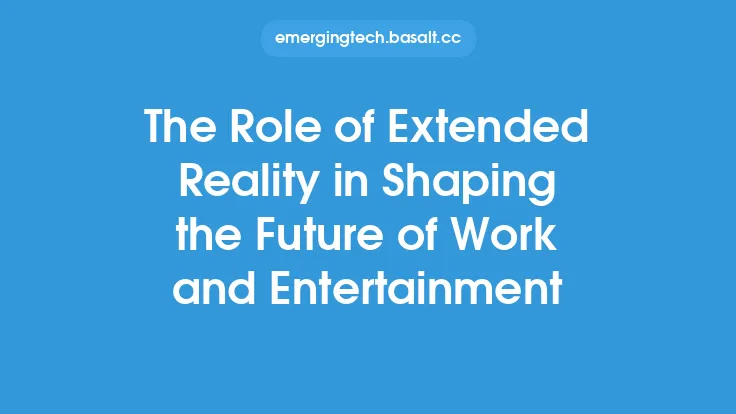The emergence of decentralized applications, also known as dApps, has been a significant development in the world of technology. These applications, which operate on blockchain networks or other decentralized systems, have the potential to revolutionize the way we interact with the internet and with each other. At their core, dApps are designed to be open, transparent, and resistant to censorship, making them an attractive option for individuals and organizations looking to create more secure and equitable online experiences.
Introduction to Decentralized Applications
Decentralized applications are built on blockchain technology, which allows for the creation of a decentralized network of nodes that work together to validate and record transactions. This decentralized architecture provides a number of benefits, including increased security, transparency, and resistance to censorship. dApps can be used for a wide range of purposes, from simple games and social media platforms to complex financial systems and supply chain management tools. One of the key features of dApps is that they are open-source, meaning that their code is available for anyone to view and modify. This allows for a community-driven development process, where users can contribute to the creation and improvement of the application.
Key Characteristics of Decentralized Applications
There are several key characteristics that define decentralized applications. First, they are decentralized, meaning that they operate on a network of nodes rather than a single central server. This makes them more resistant to censorship and downtime, as there is no single point of failure. Second, dApps are open-source, which allows for community-driven development and transparency. Third, they are autonomous, meaning that they can operate without the need for a central authority or intermediary. Finally, dApps are incentivized, meaning that they often provide rewards or tokens to users who contribute to the network or participate in the application.
How Decentralized Applications Work
Decentralized applications work by using a combination of blockchain technology and smart contracts to create a decentralized network of nodes. Smart contracts are self-executing contracts with the terms of the agreement written directly into lines of code. They allow for the automation of various processes, such as the transfer of assets or the execution of specific tasks. When a user interacts with a dApp, their transaction is broadcast to the network, where it is verified and validated by nodes using complex algorithms and cryptography. Once the transaction is verified, it is added to a block and recorded on the blockchain, creating a permanent and unalterable record.
Benefits of Decentralized Applications
There are several benefits to using decentralized applications. First, they are more secure than traditional applications, as they are resistant to censorship and downtime. Second, they are transparent, as all transactions and data are recorded on a public blockchain. Third, they are autonomous, meaning that they can operate without the need for a central authority or intermediary. Finally, they are community-driven, meaning that users can contribute to the development and improvement of the application. Additionally, dApps often provide rewards or tokens to users who contribute to the network or participate in the application, which can create a more engaged and motivated community.
Use Cases for Decentralized Applications
Decentralized applications have a wide range of potential use cases, from simple games and social media platforms to complex financial systems and supply chain management tools. Some examples of dApps include decentralized finance (DeFi) platforms, which provide lending, borrowing, and trading services without the need for traditional financial institutions. Other examples include decentralized social media platforms, which allow users to create and share content without the need for intermediaries. Additionally, dApps can be used for supply chain management, identity verification, and voting systems, among other things.
Challenges and Limitations of Decentralized Applications
While decentralized applications have the potential to revolutionize the way we interact with the internet and with each other, there are also several challenges and limitations to their adoption. One of the main challenges is scalability, as many blockchain networks are currently unable to handle a large volume of transactions. Another challenge is user experience, as many dApps can be complex and difficult to use. Additionally, there are regulatory challenges, as many governments and institutions are still unsure of how to regulate decentralized applications. Finally, there are security challenges, as dApps can be vulnerable to hacking and other forms of cyber attack.
Future of Decentralized Applications
Despite the challenges and limitations, the future of decentralized applications looks bright. As blockchain technology continues to evolve and improve, we can expect to see more scalable, user-friendly, and secure dApps. Additionally, as more users and developers become familiar with decentralized applications, we can expect to see more innovative and creative use cases. Some potential future developments include the integration of artificial intelligence and machine learning into dApps, as well as the use of decentralized applications for more complex and nuanced tasks, such as predictive analytics and decision-making. Overall, decentralized applications have the potential to create a more secure, transparent, and equitable online world, and their future development and adoption will be an exciting and important area to watch.





